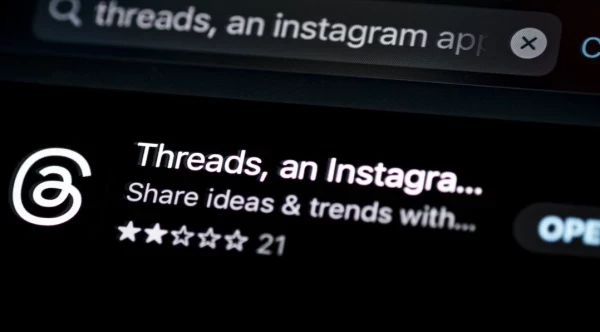Challenges When Using Social Media for B2B Lead Generation
Add bookmarkRecent reports have questioned the value of social media in driving B2B leads. Though it receives the bulk of the hype, some, armed with hard data, claim that media as simple as the corporate website remain significantly more effective than networks like Facebook, Twitter and LinkedIn at identifying and converting business prospects.
But that does not mean social media is irrelevant for B2B demand generation—in fact, the contrary is true. A recent report from White Horse says that 86% of B2B firms use social media, as compared with 82% of B2C organizations.
Disheartening study or not, social media has become a way of life for marketers and customers and is not exiting the discussion—it is here for the long-haul. But if continued investment into social media is unavoidable, B2B marketers should at least be sure they are doing it right.
And even though it is not always their fault, as of right now, many are not.
The woes of B2B social media strategy are evident right off the bat—despite a collective spend of millions of dollars, Pardot recently reportedthat 30% of B2B marketers are not tracking the impact of social media on lead generation and sales. No matter how successful or unsuccessful social media inherently is for B2B lead generation, a third of marketers are already crippling their initiatives by not properly measuring how their organization is interacting with existing and potential prospects.
Even beyond measuring, or perhaps because of a lack of proper measuring, there exists a gap between the avenues to which social media marketers dedicate their resources and those best at driving leads.
It would seem intuitive that LinkedIn, known as the "professional" social network, would be a great haven for driving B2B demand. Sure enough, the Pardot report saysthat 32% are driving leads from LinkedIn, compared with 27% for blogs, 15% for Twitter and about 12% for Facebook. YouTube is a virtual non-factor in lead generation.
Sharing data from a client engagement, Searchenginelandreported similar data on B2B conversions. It listed a conversion rate of .9% for linkedin, .6% for Twitter and .49% for Facebook (the difference, in this case, is that Digg was far and away the best lead driver, boasting a conversion rate of 1.5%).
Yet Twitter, likely due to the simplicity and the perception that the conversation is more dynamic, visible and real-time, garners the greatest attention from B2B marketers. 91% use Twitter for lead generation, slightly more than the percentage that users LinkedIn and notably more than the group using blogs, even though the latter two are significantly better at driving leads. And this data does not even account for the fact that many marketers, evidently seeing Twitter as the most worthwhile B2B social network, treat Twitter as a "home base" for social marketing and devote a large chunk of their resources to the network.
Tactical errors aside, an even bigger bottleneck on B2B lead generation is uncertainty. Fundamental philosophical differences exist between B2B and B2C demand generation strategy, and that means great question exists over the right way to guide prospects towards a purchase, even from those who can identify successful end-user strategies.
Indeed, there is simply no consensus over the proper "rules of engagement" for connecting with prospects and building the brand on social networks.
55% say it is okay to contact a social media lead by phone or email, and 48% say they are okay with the reverse. Even one of the most fundamental elements of B2B social media--putting prospects through the demand generation cycle—lacks a universally-accepted roadmap.
What about brand perception? While demonstrating humanity and organizational commitment are essential for building relationships on social media, B2B firms simultaneously need to demonstrate their authority, industry knowledge and professionalism. To a far greater extent than those in B2C, B2B marketers cannot "whore out" their brands with light-hearted, "impossible-to-hate" social media strategies. They thus walk a much finer line between being engaging and being formal.
Intense debate even exists on heavy issues—a full 31% object to disparaging competitors on social networks. With something so seemingly-straightforward unable to garner anywhere near a universal consensus on the "best practice," it is impossible to ignore how crippling the uncertainty of social B2B marketing can be.
And one cannot ignore the "chicken and the egg" element of social B2B engagement. As noted, since corporate blogs and websites remain prominent lead generators, often to a far greater extent than the major social networks, some marketers may presently treat social as nothing more than an intermediary advertising tool for driving prospects to higher-conversion media. If that is the case, social’s progression as a conversion tool—in its own right—will stall.
Others may be more aggressive about driving actual relationships, deals and commerce through social channels, but until the market catches up with that strategy, evidence of success may trickle in slowly.
As all individuals, whether focused on B2B or B2C, grow their use of social media as a key information and communications channel, it becomes increasingly-insane for marketers to ignore social lead generation efforts.
[eventPDF]
But the early success has not been resounding, and ongoing murkiness over how to approach prospects over social media, let alone over which networks on which to contact these prospects, is contributing to slow growth. As with many B2C strategists, the first step in turning social media into a valuable part of the B2B lead generation game is to understand that "being there" is not enough—the firm has to "be there" with the proper mindset, the proper gameplan and the proper image.





















